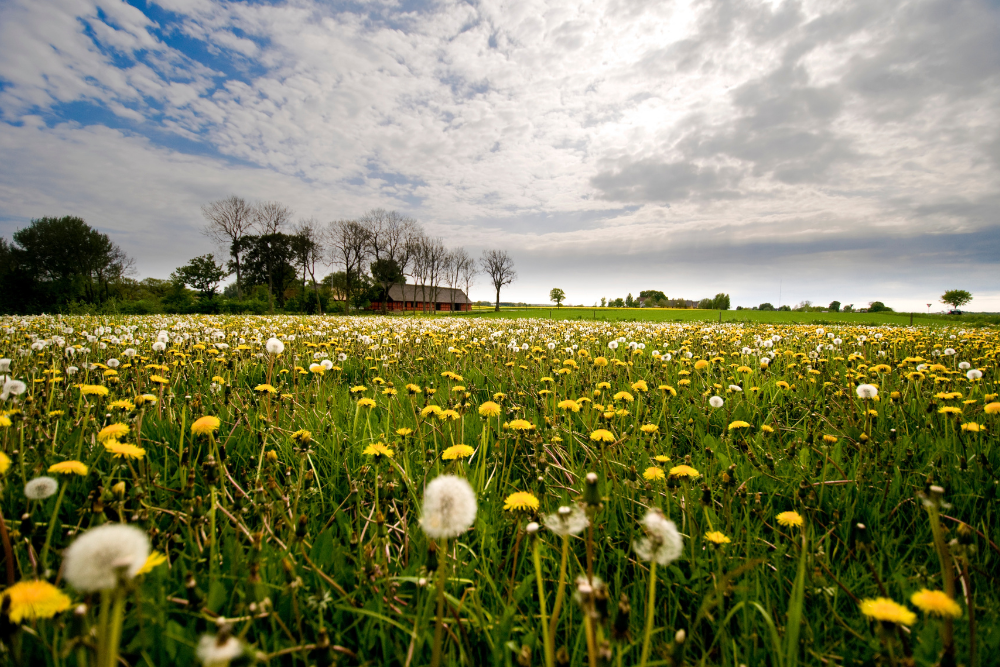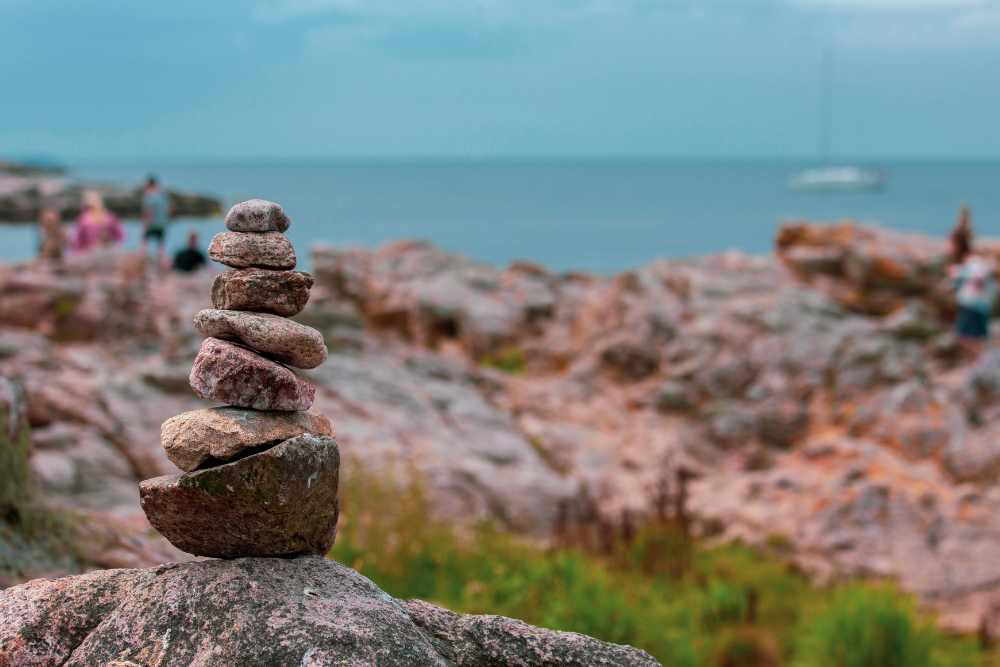Denmark is made up of over 400 islands, each offering its own unique charm, natural beauty, and cultural heritage. While many people are familiar with Copenhagen, the Danish capital, few know the wealth of adventures that await on the country’s lesser-known islands. From the rocky landscapes of Bornholm to the tranquil beaches of Funen and the historical treasures of Zealand, Denmark’s islands offer a refreshing and diverse alternative to mainland tourism.
In this guide, we’ll explore the highlights of Bornholm, Denmark’s sunniest island, as well as several other notable islands that are well worth visiting.
1. Bornholm: Denmark’s Gem in the Baltic Sea

Known for its stunning natural landscapes, rugged cliffs, sandy beaches, and charming villages, Bornholm is one of Denmark’s most beloved islands. Situated in the Baltic Sea, south of Sweden, it offers a delightful blend of outdoor adventures, cultural experiences, and culinary delights.
Things to Do on Bornholm
- Explore the Cliffs and Coastal Beauty: Bornholm is famous for its dramatic coastline, with towering cliffs and crystal-clear waters. The island’s Rocks of Hammeren are particularly breathtaking, with sharp cliffs that plunge into the sea. Hammershus Castle, perched on top of the cliffs, is a must-see. It’s the largest medieval fortress in northern Europe and offers fantastic views of the surrounding area.
- Cycle Around Bornholm: With its scenic beauty and well-maintained cycling routes, Bornholm is a cyclist’s paradise. The island boasts over 200 kilometers of bike paths, which take you through picturesque villages, along the coastline, and past lush forests. The cycle route around the island offers a leisurely way to explore its many attractions.
- Visit the Round Churches: Bornholm is known for its unique medieval round churches, which were built in the 12th century. There are four round churches on the island, each offering insight into Denmark’s religious history and medieval architecture. The Østerlars Church is the largest and most famous of them all.
- Bornholm Art Scene: Bornholm is also home to a thriving arts community. You’ll find numerous galleries showcasing local art, particularly those inspired by the island’s natural beauty. The Bornholm Art Museum features works by Danish artists and international exhibitions.
- Taste Bornholm: The island is known for its excellent culinary offerings, including fresh seafood, smoked herring, and local cheeses. Visit one of the many smokehouses dotted around the island, or head to Svaneke, a charming coastal town that is home to several artisan food producers, including a renowned brewery.
Getting There:
Bornholm is accessible by ferry from Ystad in Sweden, Koge in Denmark, or by air from Copenhagen. The island is small enough to explore by car or bike, and public transportation is also available.
2. Funen: Denmark’s “Garden Island”

Known as Denmark’s “Garden Island,” Funen is the birthplace of famous fairytale author Hans Christian Andersen and offers a combination of lush countryside, charming villages, and historical landmarks.
Things to Do on Funen
- Hans Christian Andersen Museum: Funen is best known as the home of Hans Christian Andersen, the beloved author of fairy tales like The Little Mermaid and The Ugly Duckling. In the town of Odense, you’ll find the Hans Christian Andersen Museum, which is dedicated to his life and work. Explore exhibits about his childhood and the stories that made him famous.
- Explore the Countryside: Funen is famous for its beautiful landscapes, with rolling hills, picturesque lakes, and expansive farmland. Take a walk or bike ride through Svanninge Bakker (The Svanninge Hills), a stunning nature area that offers panoramic views of the island. The Fyns Hoved Nature Reserve is another highlight, with dramatic coastal scenery and abundant birdlife.
- Egeskov Castle: Located in the southern part of the island, Egeskov Castle is a beautifully preserved Renaissance-era estate surrounded by lush gardens, a moat, and even a tree-top walking path. The castle also houses a collection of vintage cars, motorcycles, and other exhibits.
- Charming Towns: Funen is home to several charming towns, including Kerteminde, a coastal town known for its harbor and excellent seafood, and Middelfart, where you can enjoy picturesque views over the Little Belt strait.
Getting There:
Funen is connected to mainland Denmark by the Great Belt Bridge, making it easily accessible by car or train. The island is well-served by public transportation, with regular buses and trains linking major towns.
3. Zealand: Denmark’s Cultural and Historical Heart

As the largest island in Denmark, Zealand is the cultural and historical heart of the country, home to the capital, Copenhagen. While the city itself is packed with attractions, the island’s countryside offers a peaceful escape with castles, beaches, and charming small towns.
Things to Do on Zealand
- Visit Frederiksborg Castle: Located in Hillerød, Frederiksborg Castle is one of Denmark’s most stunning Renaissance castles. Surrounded by a beautiful lake and gardens, the castle houses the Museum of National History, showcasing art and artifacts from Denmark’s past.
- Kongens Nytorv and Nyhavn: In Copenhagen, Kongens Nytorv (King’s New Square) and the iconic Nyhavn harbor are perfect for leisurely walks. Nyhavn, with its colorful buildings and historic boats, is a great spot for enjoying a traditional Danish smørrebrød (open-faced sandwich) at one of the outdoor cafés.
- Roskilde: The city of Roskilde is famous for its Viking Ship Museum, where you can see restored Viking ships and learn about Denmark’s seafaring history. Roskilde Cathedral, a UNESCO World Heritage site, is another must-visit, with its stunning Gothic architecture and royal tombs.
- Møns Klint: For nature lovers, Møns Klint is one of Denmark’s most dramatic coastal areas. The towering white chalk cliffs rise up to 128 meters above the sea and provide stunning views over the Baltic Sea. Hike along the cliffs and explore the surrounding forests and beaches.
Getting There:
Zealand is easily accessible from Copenhagen, either by car or train. The island is well-connected by road, with major highways and bridges linking it to other parts of Denmark.
4. Lolland and Falster: Quiet Retreats and Natural Beauty

The islands of Lolland and Falster are often overlooked by tourists but offer peaceful rural landscapes, historical sites, and pristine beaches.
Things to Do on Lolland and Falster
- Maribo: The small town of Maribo on Lolland is home to the Maribo Cathedral, a beautiful example of Gothic architecture. The nearby Lolland Nature Park offers a great place to enjoy hiking and birdwatching.
- Knuthenborg Safari Park: Located on Lolland, this safari park is one of the largest in Scandinavia. You can drive through the park and see exotic animals like zebras, giraffes, and elephants, as well as native species like deer and wild boar.
- Falster Beaches: Falster is known for its long, sandy beaches, particularly around Saksfjed-Hyllekrog, perfect for a relaxing day by the sea. The island’s gentle coastlines make it ideal for swimming and kayaking.
Getting There:
Both Lolland and Falster are accessible by train or car from Copenhagen. The islands are connected by bridges to the mainland, and Lolland is also accessible by ferry from the southern parts of Sweden.
Conclusion

Denmark’s islands offer an incredible variety of experiences, from the rugged beauty of Bornholm to the cultural richness of Zealand and Funen. Whether you’re seeking adventure, relaxation, or history, the islands of Denmark provide a diverse range of activities and landscapes to explore. Each island has its own unique personality, making it easy to find the perfect getaway, whether you’re looking for nature, art, or historical landmarks. So, pack your bags and set off to discover the magic of Denmark’s islands!












